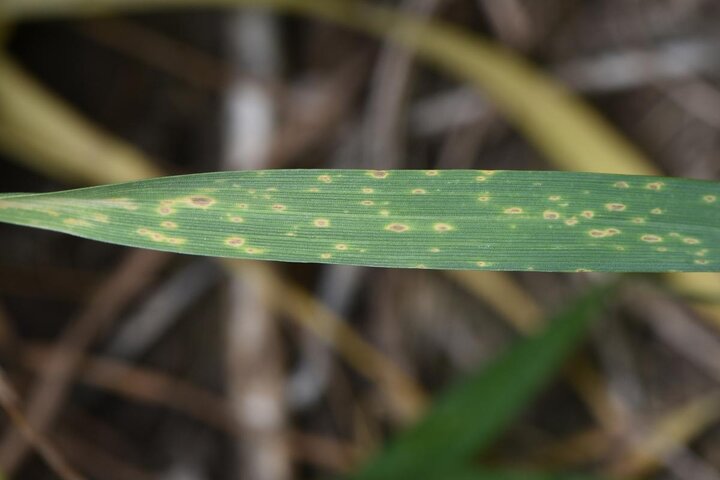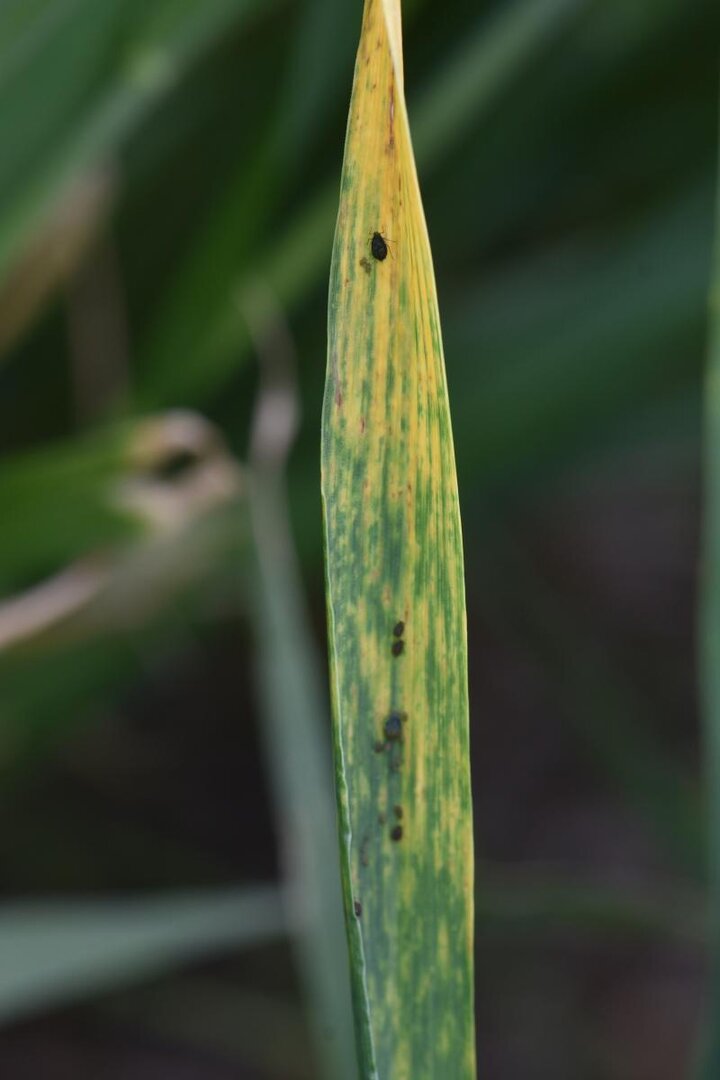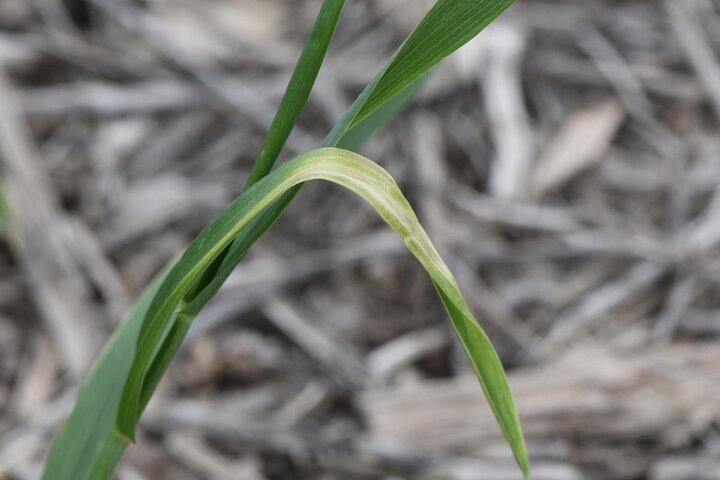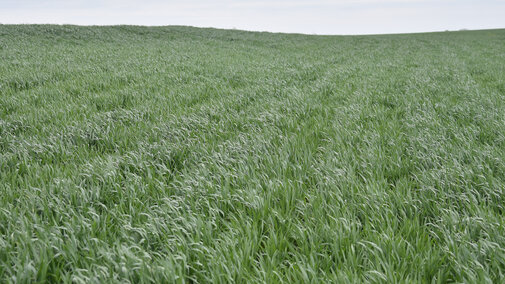

A survey of wheat fields in Gage and Jefferson counties on May 5 revealed none to very low levels of disease. Wheat in all fields surveyed looked healthy with a lush green canopy (Figure 1). Growth stage ranged from Feekes 7 (second node and next to last leaf visible) to Feekes 9 (flag leaf emerged).
In Jefferson County, fungal leaf spot diseases were in initial (Figure 2) to advanced (Figure 3) levels of development on individual leaves in a grower’s field and in a state variety trial planted in the same field, but incidence and severity were low to moderate. Symptoms appeared mostly on leaves in the lower and mid canopies.
Barley yellow dwarf was also present in this field at low levels, and aphids were present on symptomatic plants (Figure 4). In a grower’s field in Gage County that appeared disease-free, there was a symptom of undetermined cause (Figure 5) at a low incidence in a small area of the field. It is likely that cold temperature injury caused this symptom.
Reports from Southern States


Stripe rust is currently reported to be the most prevalent foliar disease of wheat in Oklahoma and has been confirmed in southeast and central Kansas. Although dry weather in Texas and parts of Oklahoma coupled with the recent freezing temperatures in southern states may somewhat lower the amount of rust spores blown into Nebraska, it is likely that we will see stripe rust and leaf rust in Nebraska wheat fields. How severe and widespread the diseases will be is unknown, but all will depend on the weather, with more disease expected if frequent rainfall occurs.
Management
Continue to scout wheat fields for diseases and monitor the weather. Be prepared to apply a fungicide to protect the flag leaf from foliar fungal leaf spot and rust diseases if they develop to damaging levels or if weather conditions favor their development. Barley yellow dwarf and other virus diseases, as well as abiotic disorders such as those resulting from freeze injury, cannot be controlled once they occur.

